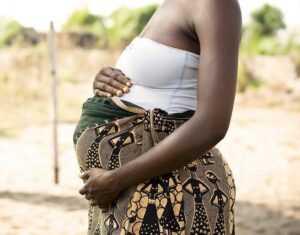
Teenage Pregnancy in Rural Kenya
High teenage pregnancy cases persist in rural Kenya despite a slight decrease. Over 250,000 adolescents sought antenatal care in 2023, according to NSDCC data. Caroline Kinoti from NSDCC believes the actual number might be higher. Teenage pregnancy cases dropped slightly in 2023 but remain a significant concern.
Pregnant Afican girl
Underreporting Concerns
Kinoti suggests proactive measures to encourage accurate reporting of cases. Efforts should ensure all pregnant teenagers have access to healthcare. Accurate documentation is crucial for implementing targeted interventions. Therefore, all pregnant teenagers should have access to appropriate healthcare.
Government’s Eradication Goals
The government aims for eradication by 2030, but challenges persist. Stakeholders emphasize economic empowerment to tackle teenage pregnancy effectively. Lack of access to sanitary pads remains a key issue. Rosline Odongo raises an alarm about girls seeking sanitary pads from their sexual partners.
Importance of Education and Awareness
During a sensitization meeting in Uriri Sub County, Odongo stressed educating teenage girls. Community members should be aware of available resources. Two out of three rural teenage girls receive sanitary pads from sexual partners. The lack of access to affordable sanitary products exacerbates vulnerability.
Government’s Mitigation Efforts
The Ministry of Health promotes delaying sexual debut among girls. Comprehensive sex education programs should be implemented in schools. Active measures are needed to address socioeconomic factors contributing to teenage pregnancy. A multi-sectoral approach is crucial for reducing teenage pregnancy.